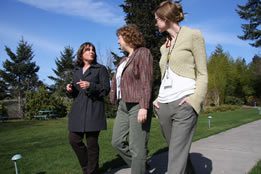The Physical Activity Formula for Those With Sedentary Jobs

Perhaps you’ve heard that sitting is the new smoking? Sitting all day is not good for our health. We’ve actually known this, from a public health perspective, for over 60 years. Back in the 50s, researchers studied men (yes, not much research done with women in those days) who had jobs that required them to sit, compared to those who were standing or walking during the work day. The study showed that the rates of illness and early death were highest among those who were the least active. As we are now a society of desk jockeys, it makes sense that scientists would revisit this research.
The perils of sitting are many. From life threatening illness such as heart disease and colon cancer, to conditions that impact our daily life such as back pain, neck strain and foggy brain, sitting is hazardous to our health. Studies show that remaining stationary for extended periods of time, can be detrimental to your health. Until now, it was unclear how much physical activity was required to offset a day of sitting.
A study published in the medical journal The Lancet, shows the ideal formula for counteracting the negative effects of a sedentary work life. The ratio depends on how much you sit. The study looked at data from a pool of a million adults over the age of 45 in Western Europe, the United States, and Australia. The researchers examined data from other studies to determine how much exercise is required to compensate for sitting. For example, if you work a typical 8 hour day, spend at least one hour each day moving. If that seems like a lot, just remember that you don’t have to complete all physical activity at one time. This study reinforces the advice we’ve heard for years that exercise can be done in smaller bouts rather than all at once.
Finding an hour may seem like a lot if you aren’t already active, but it is doable if you parse it out over the course of the day. Think about 10 minute breaks every hour or so. Incorporate walking meetings, lunch time walks, or walking during a conference call, to add physical activity to your day. Not only will you be healthier, but you will be more productive! In his book, Seven Habits of Highly Effective People, Stephen Covey writes about sharpening the saw. Sharpening the saw is simply a strategy of revitalizing yourself and includes physical activity. Taking breaks during work restores energy and focus, and the increased blood flow from physical activity improves concentration.
How do you get started? Set audible reminders on your calendar, watch, or cell phone to get up and move around, and, as they say at Nike, just do it!










